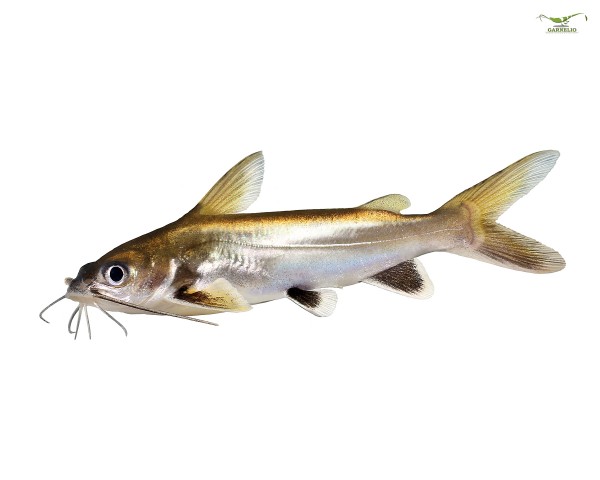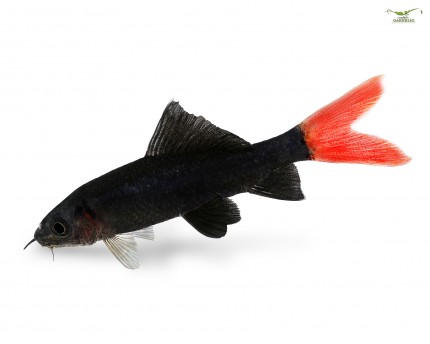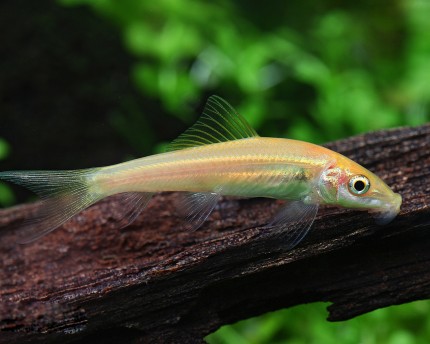incl. VAT plus shipping costs
Ready for shipment in 2 Day(s)
Delivery only innh. Germany and Austria possible.
Switch to the German store
- Item no: 7027
Fast delivery times
All products are in stock with us!14 years of breeding experience
Let our team of experts advise you!High customer satisfaction
from over 3,000 reviews "| Pelvic region: | Center |
| Diet: | carnivore - meat eater |
| Temperature: | 18-28 °C |
| Feature: | becomes particularly large |
| Aquarium size: | over 1000l |
| Water values: | Brackish water |
| Difficulty: | 4 - Special |
| Origin: | Central America |
| Planting possible?: | conditional* (see description) |
| Final size: | > 12cm |
| with shrimps?: | Socialization not possible |
| Fish group: | Catfish |
| Visual effect: | Especially colorful |
| Behavior: | Normal |
| with large crabs?: | No |
| with fish?: | conditional* (see description) |
| Breeding: | heavy |
| with snails/shells?: | conditional* (see description) |
| with dwarf crabs?: | No |
| with crabs?: | No |
Although the mini shark appears to be a shark only by its terminal size and appearance, which gave it its name, it is actually a West American cross catfish, also known as Arius seemanni or Ariopsis seemanni. It is endemic to seawater and brackish water of American, Pacific tributary rivers from southern California and northern Mexico to Colombia, Ecuador and Peru to the south. The mini shark is a migratory fish that hatches in freshwater areas, but only stays there up to a size of 3 centimeters and then seeks out brackish water areas to move out to the open ocean as adults. This should definitely be taken into account when keeping the fish, if necessary also under the premise of completely changing the original brackish water aquarium to seawater as the fish grows older. According to experience, the mini shark can live between 15 and 17 years with very good care.
Also called "silver catfish", the mini shark has a slender high back, which is flattened at the sides and appears silver-gray, or grayish-brown in basic coloration. The ventral part is lighter in color and changes to silver on the flanks. The scaleless body is protected by bony shields at the head and in front of the dorsal fin. The rounded mouth has conical teeth and is surrounded by 3 pairs of barbels. The short, though quite high, dorsal fin is pointed, with the first fin ray serrated and possessing a venom gland. The venom of the mini-shark causes an inhibition of blood clotting and is harmless to most people, although the sting causes a long-lasting pain and requires longer healing than usual wounds. It also has venom glands on two barbels in the mouth area. Therefore, caution is advised not only in general when dealing with these animals, but also especially for allergy sufferers. In front of the deeply forked caudal fin is an adipose fin, as known from tetras. The mini shark is an intraspecific social catfish that likes to live in groups.
Sex differentiation of the mini shark is difficult. Females are believed to have a wider pelvic region and an additional very conspicuous pair of pelvic fins at the spawning stage. To date, there have been no reports of captive breeding success of this mouthbrooder.
Since the mini shark can reach a final size of up to 45 centimeters, it is obvious that a rather large aquarium of 720 liters or more is offered to it from the outset, which may even become too small for it when fully grown. Since he is both a pronounced swimmer and is also maintained in brackish water, the tank setup is rather simple with structured stone structures for territorial delimitation. When changing to seawater, the original reef structure can gradually be colonized with corals and other lower animals. The socialization with lionfish, triggerfish as well as clownfish is possible.
These fascinating animals can be kept at a temperature between 22-26°C, as well as at a pH between 6-8 and a GH of 10-30°. Up to a body length of 10 centimeters the aquarium water should have a density of 1.005 to 1.010 gr per cm³, for specimens above that between 1.010-1.017 gr/cm³. Adult animals are completely switched to seawater, and the density here is at least 1.023 gr/cm³.
Mini sharks feed on smaller fish and also invertebrates in their habitat, so socialization in the juvenile stage with similarly sized fish should not be a problem, but these could be considered prey by this predator above a certain size. In accordance with its nature, the mini shark should be fed larger frozen foods and live foods depending on its age and size, and it can also be offered smelts and shrimp. Although it may also eat aufwuchs, this is rather the exception. He can be accustomed to flake food.
Our food recommendation: The NatureHolic Catfish Feed for all aufwuchs feeding sucking catfish in the aquarium is a balanced tablet food, which does not cloud the water and the fish like to eat. The catfish tablets also contain NatureHolic active ingredient complexes that provide sucker catfish with everything they need for a strong immune system, healthy growth and great, contrasting coloration.
Our plant recommendation: Use for planting NatureHolic InVitros. These are free of snails, planarians and other unwanted co-inhabitants. Also free of algae spores, bacteria and fungi.
Expert Tip: We recommend for fish keeping the NatureHolic 3 Phase Liquid. The care set offers the best all-round protection for your animals. It ensures optimal conditions for successful breeding and keeping.
| Scientific name: | Arius seemanni, now Hexanematichthys seemanni |
| German Name: | Mini Shark (also: Black-Fin sahrk, Columbian Shark, Silver Shark) |
| Difficulty level: | for professionals |
| Origin/Distribution: | South American estuaries, Colombia, Ecuador, southern California, Peru |
| Coloration: | silver-gray, high-backed, belly side lighter, flanks silvery, full lateral line |
| Age expectancy | 15-17 years |
| Water parameters: | GH 10-30, KH 8-12, pH 6-8, temperature 25-28°C |
| Tank size: | 720 liters and larger |
| Food | Carnivorous |
| Breeding | not breedable |
| Behavior | interspecies peaceful, socialize only with larger fish, triggerfish, clownfish and lionfish possible |
| Group size | at least 2-3 animals |
| Further information | Ten typical aquarium fish for beginners and alternatives to them, Tips for acclimating fish to the aquarium, Feeding aquarium fish properly - cheap food and what it can do |
- Item no: 7027
Entdecke die Garnelio Welt!
Garnelio gehört zu den größten Onlineshops für wirbellose Aquarientiere weltweit.
Viele Artikel gibt es exklusiv nur bei uns im Shop.























